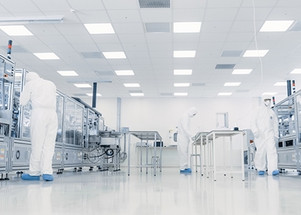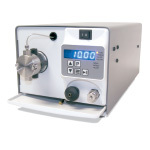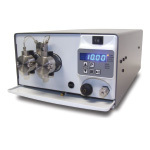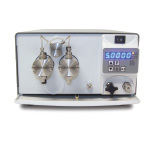11th Mar 2024
5 Features to Consider When Choosing a Pump for Continuous Process Applications
Replacing Pharma's Conventional Batch Processing
In diverse manufacturing sectors, transitioning from conventional batch chemistry to continuous process applications prior to scaling up holds the potential to significantly reduce waste, mitigate environmental impacts, and, most importantly, streamline both time and cost. The successful implementation of flow chemistry necessitates a blend of chemistry and engineering expertise to identify optimal practices for converting processes from batch to continuous.
While automating these processes may pose initial complexities in setup and fine-tuning, the ensuing benefits are well worth the investment. A pivotal early step in this transformative journey involves pinpointing the most suitable flow chemistry pump capable of meeting the specific requirements of the chemical reactions at hand.
 Source:thechemicalengineer.com
Source:thechemicalengineer.com
1. Reliability & Maintenance
Assess the reliability of the pump, as continuous processes often demand consistent and uninterrupted operation. Choose a pump with a proven track record for reliability and minimal downtime.
Various capabilities and features are available, with options for every application. Whether you prefer a small, economical pump for routine analyses, or something that can handle a more demanding process, we’ve got options for you. Every single one of our solvent delivery pumps offers proven dependability, flow accuracy, and low gradient delay.
While our pumps are used for a variety of applications, one common theme with almost all end-users is the need for a dependable ‘work horse’ pump that can run unattended for long periods of time and require minimal maintenance. To prolong the life of your pump and reduce the risk of unexpected leaks or flow issues, we recommend changing your piston seals and check valves on an annual basis. For a list of replacement parts, you can visit the webpage for your specific pump (search by part number) and scroll down to “related products” or view the general product brochure or manual for your pump class.
2. Precision & Control
When deciding on a pump, a good question to ask yourself is whether pulsation is a big concern for your application. If so, we always recommend a dual piston pump, like the LD or PR class pumps. The reciprocal pistons recoil at alternating times, so you won’t experience a significant pulsation as you would when a singular piston refills.
Some applications are less sensitive to pulsation, allowing for a more economical option such as the M1 Series pumps, which are single piston pumps with a small footprint. We also offer single piston pumps with more features such as a pressure monitoring and a drip tray leak sensor in the LST models.
3. Chemical Compatibility
Another consideration is what flow path material to choose. All our pumps are available in PEEK and Stainless Steel, and we do offer Titanium or Hastelloy for some of our pumps as well. If you aren’t sure about the chemical compatibility of your solvents with the wetted materials of the pump, be sure to ask our product specialists for assistance in determining what will work.
4. Flow Rate & Pressure Requirements
Typically, continuous process applications require a constant flow of materials, so our various constant flow pumps are the most commonly used. An HPLC pump sold as a standalone unit is ideal for these types of applications because they offer very precise and accurate solvent delivery.
Below you will find various flow rate and pressure capabilities for our various pumps:
Dual Piston
36 mL/6,000 PSI
100 mL/1,000 PSI
100 mL/4,000 PSI
300 mL/1,000 PSI
On a related note, different chemicals have varying viscosities, which may require additional consideration. The reason is because our pumps require backpressure to enable the check valves and pulse dampeners to work properly.
5. Compatibility with Automation Systems
Your continuous process will almost certainly involve automation, which generally requires remote pump control. Chrom Tech pumps can be controlled via serial communication through the RS-232 serial port, the Micro USB port (which requires a hardware driver), and the Ethernet port. While many end-users utilize existing software, we do also offer a free driver download for software control.
Conclusion
By carefully considering these factors, you can select a pump that aligns with the specific requirements of your continuous process application, ultimately contributing to improved performance, reliability, and cost-effectiveness.






